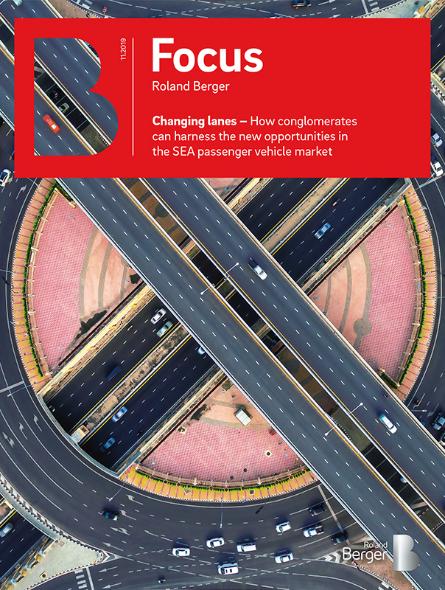Taking pole position in Southeast Asia’s passenger vehicle market
![{[downloads[language].preview]}](https://www.rolandberger.com/publications/publication_image/RB_STU_548_SEA's_Passenger_Vehicle_Market_Cover_download_preview.jpg)
The current path conglomerates are on is coming to an end. Now is the time to shift up a gear, change lanes and speed forward.


Southeast Asia's passenger vehicle market is facing an uphill battle. The once appealing and accommodating "blue ocean" market is fast disappearing as growth slows, with the gloomy global economic outlook compounding the slowdown. Players now not only need to work harder, they also have to plan smarter to safeguard the fast-lane profit levels they used to enjoy.
Standing at the crossroads of risk and reward are the conglomerates that dominate automotive distribution in Southeast Asia (SEA). On the one hand, these players risk increased customer churn, revenue decline or even risk of replacement if they fail to act. But on the other hand, the rewards if they take advantage of the new opportunities arising from the market's volatility are great: increased customer loyalty, dominance in the used car market, partnerships with mobility providers who are here to stay and, ultimately, sustainable long-term growth.

In this study, we look at the current state of the SEA passenger vehicle market, identify problems in it using our recent survey of 120 leading dealers and distributors in the region, and offer solutions and recommendations to get conglomerates and multinationals back on track. We advise that they engage in a multi-dimensional approach that fixes their existing business model, allows diversification into adjacencies and takes advantage of new business opportunities.
Our survey revealed three key problems facing dealers in the SEA passenger vehicle market, namely: inadequate customer retention given the existing dealership business model; low sophistication in used car market with limited online platform solution offerings; and the tightening regulation on mobility providers that is dampening industry sentiment. These issues in the SEA auto market are surmountable and conglomerates can incorporate several solutions presented in this study.
Our recommendations are not only about finding new revenue streams. They also aim to address the even more pressing matter of staying relevant in a changing market. The current path conglomerates are on is coming to an end and they will soon stagnate. So now is the time to shift up a gear, change lanes and speed forward.

![{[downloads[language].preview]}](https://www.rolandberger.com/publications/publication_image/RB_STU_548_SEA's_Passenger_Vehicle_Market_Cover_download_preview.jpg)
The current path conglomerates are on is coming to an end. Now is the time to shift up a gear, change lanes and speed forward.
Sign up for our newsletter and get regular updates on Automotive topics.